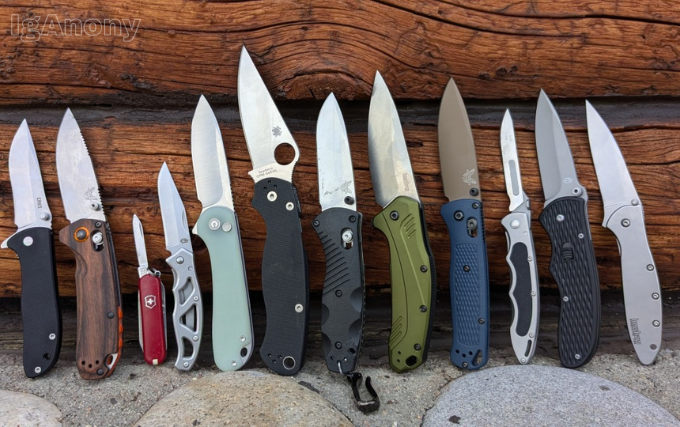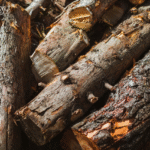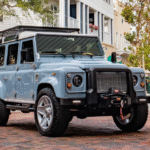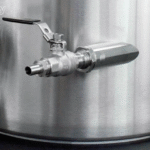Everyday carry (EDC) knives have become a staple for people who value preparedness and practicality. Whether you’re opening packages, tackling small repairs, or just enjoying the peace of mind that comes with having a reliable tool on hand, an EDC knife is a must. But with so many options out there, how do you choose the best one for your needs? It’s all about the features. A great EDC knife balances functionality, comfort, and durability in a compact package. Here’s a breakdown of the top features to look for when picking the perfect blade for your daily carry.
Blade Material: The Heart of the Knife
The blade is where it all begins, and the material it’s made from sets the tone for performance. Stainless steel is a popular choice for Pocket Knives because it resists rust and holds up well in everyday conditions—think damp pockets or rainy days. Look for high-quality variants like VG-10 or S30V, which offer a great mix of edge retention and corrosion resistance without breaking the bank.
Carbon steel is another contender, prized for its sharpness and ease of sharpening, though it needs more care to avoid rust. For premium options, consider Damascus steel—it’s not just gorgeous with its wavy patterns, but also tough and long-lasting. The best EDC knife for you depends on your environment and maintenance habits, but a solid blade material is non-negotiable for durability and cutting power.
Blade Length: Size Matters
EDC Knives are all about practicality, so blade length is a key factor. Too short, and it won’t handle bigger tasks; too long, and it’s cumbersome or even illegal in some places. A sweet spot for most people is between 2.5 and 3.5 inches. This size is versatile enough to slice fruit, cut rope, or pry open a paint can, while still fitting comfortably in your pocket.
Check local laws, too—some areas cap legal carry length at 3 inches. A blade in this range strikes a balance between utility and portability, making it ideal for daily use without drawing unwanted attention. Test a few lengths to see what feels right in your hand, but aim for something that’s functional yet unobtrusive.
Blade Shape: Form Meets Function
Not all blades are created equal, and the shape impacts what your knife can do. A drop-point blade, with its gently sloping spine, is a crowd favorite for EDC—it’s strong, versatile, and great for slicing or piercing. Clip-point blades, with a sharper, more defined tip, excel at detail work like cutting threads or opening letters.
For a tougher, more tactical vibe, a tanto blade offers a reinforced tip that’s perfect for prying or stabbing through tough materials. If you’re into simplicity, a straight-back or sheepsfoot blade keeps things straightforward for clean cuts. Think about your daily tasks—do you need precision or power?—and pick a shape that matches your routine.
Locking Mechanism: Safety First
A knife is only as good as its lock. Without a secure mechanism, the blade can collapse mid-use, and that’s a risk no one should take. The liner lock is a classic, using a spring-loaded metal strip to hold the blade open—it’s reliable and easy to operate one-handed. Frame locks are similar but beefier, with part of the handle itself locking the blade, offering extra strength.
For a smoother action, look at a lockback design, where a spine-mounted lock clicks into place; it’s sturdy and satisfying to use. Assisted-opening knives with spring mechanisms (like those with a flipper tab) are fast and fun, but make sure they’re legal where you live. Whatever you choose, test the lock for firmness—no wobble means no worries.
Handle Material: Grip and Comfort
The handle is your connection to the knife, so it needs to feel good and hold up. G-10, a fiberglass composite, is a top pick for EDC—it’s lightweight, grippy, and nearly indestructible. Micarta, made from layered fabric and resin, offers a warm, organic feel that molds to your hand over time. For a sleek, modern vibe, aluminum or titanium handles are tough and corrosion-resistant, though they can get slippery when wet.
Wood and bone add a traditional touch but may need more care. Texture matters, too—look for checkering or ridges to prevent slipping during heavy use. The best handle fits your hand like a glove, balancing weight and ergonomics so you can use it for hours without fatigue.
Pocket Clip: Carry Convenience
An EDC knife isn’t much use if it’s buried in a drawer, so a pocket clip is a must. It keeps the knife accessible, secure, and oriented the way you like—tip-up or tip-down, depending on how you grab it. Look for a clip that’s sturdy but not overly stiff; you want it to slide onto your pocket or belt without a wrestling match.
Reversible or ambidextrous clips are a bonus, letting you switch sides for left- or right-handed carry. Deep-carry clips, which sit the knife low in your pocket, add discretion—great for urban settings where you’d rather not flash your gear. A good clip turns your knife into a seamless part of your daily routine.
Weight and Size: Everyday Comfort
An EDC knife should feel like an extension of you, not a burden. Weight is a big part of that. Aim for something between 2 and 4 ounces—light enough to forget it’s there, but heavy enough to feel substantial. A bulky knife drags down your pants or jabs your thigh, while one too flimsy feels like a toy.
Closed length matters, too—4 to 5 inches is typical for a folder, keeping it pocket-friendly without sacrificing blade size. Slip it into your pocket or bag during a test run; if it disappears into your carry without fuss, you’ve found a winner. Comfort over long days is what separates a good EDC knife from a great one.
Ease of Maintenance: Keep It Sharp
No knife stays perfect forever, so look for one that’s easy to maintain. A blade with a simple edge (not serrated, unless you need it for tough materials) is a breeze to sharpen with a basic stone or pull-through sharpener. Stainless steel resists rust, but even high-end blades dull eventually—check if the manufacturer offers sharpening services or if the design allows DIY touch-ups.
Screws and pivot points should be accessible, too. A knife with standard Torx or Phillips screws lets you tighten or disassemble it for cleaning without specialty tools. Dirt and gunk build up over time, especially in folders, so a low-maintenance design saves you headaches down the road.
Build Quality: Invest in Reliability
You get what you pay for with EDC knives, and skimping can mean a blade that chips or a lock that fails. Look for tight tolerances—no blade play when locked—and smooth action when opening and closing. Brands with a reputation for quality (think Benchmade, Spyderco, or Kershaw) often back their knives with warranties, a sign they stand by their work.
Fit and finish matter, too—gaps or rough edges signal sloppy craftsmanship. Hold it, flick it open, feel the weight. A well-built knife feels solid and inspires confidence, whether you’re cutting twine or prepping kindling. It’s an investment in a tool you’ll rely on daily.
Why These Features Matter
The best EDC knife isn’t about having every bell and whistle—it’s about matching your needs with a tool that performs. Blade material and shape determine what it can cut; locks and handles keep it safe and comfortable; clips and size make it practical to carry. A knife that checks these boxes becomes more than gear—it’s a partner for life’s little challenges.
Take your time choosing. Handle a few, read reviews, and think about your day-to-day. Whether you’re a minimalist who wants a sleek slicer or a rugged type needing a tank of a blade, these features guide you to the perfect pick. An EDC knife isn’t just a purchase—it’s a commitment to being ready, every day.







